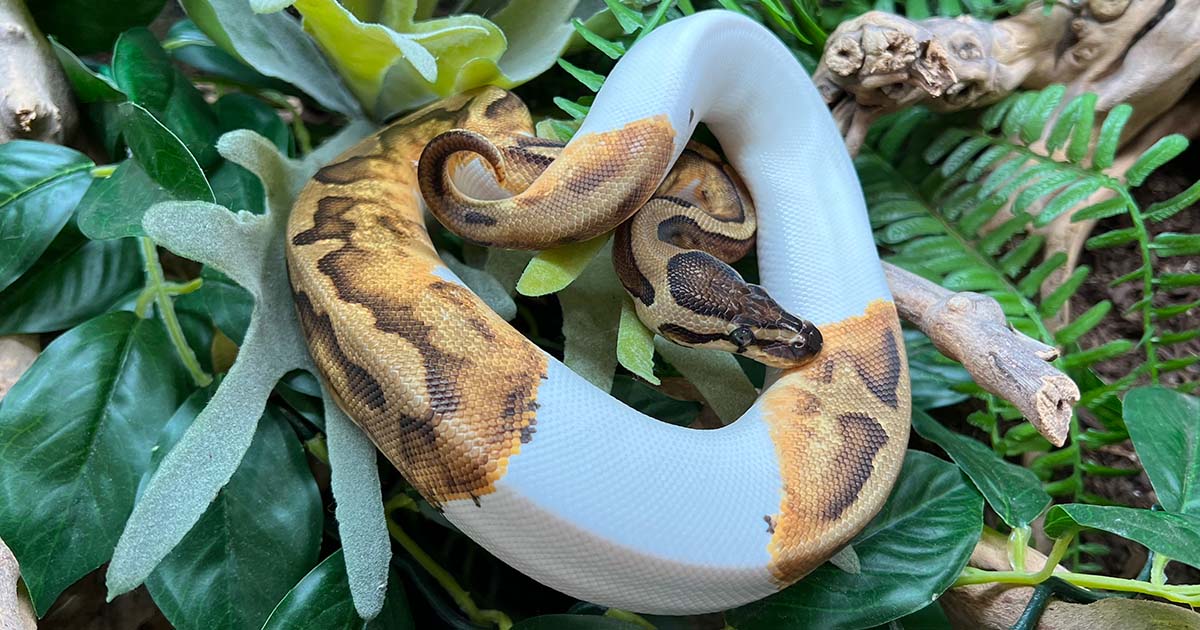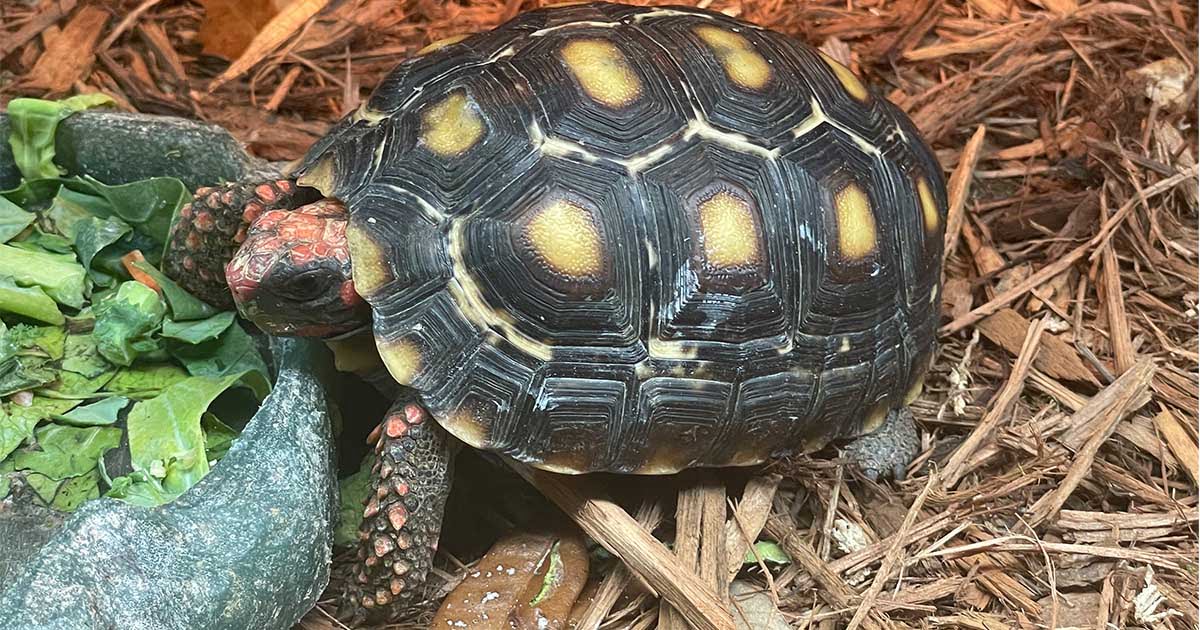The ball python, scientifically known as Python regius but often referred to as the royal Python, is a species native to West and Central Africa. These snakes are known for their calm and docile nature, making them great companions for families and friends alike. Plus, ball pythons remain relatively small in size, which makes them a manageable pet for those with limited space. But how fast do ball pythons grow, and what factors impact their sizes?
In this article, we’ll tell you all about the growth rate of these snakes, along with the factors that impact it. From meal sizes and region influence to temperature requirements, read on to learn all about the growth journey of ball pythons. For anyone researching ball pythons for sale it is important to understand this prior to making a purchase.
The Scoop: How Fast Do Ball Pythons Grow?
Ball pythons, known for their manageable size, usually start off as hatchlings measuring between 12 and 15 inches long. As these docile companions grow into adults, they reach lengths of 40 to 45 inches teypically. They may even grow up to 72 inches long but this is not typical. However, the rate at which your baby python grows depends on a bunch of factors. These including diet, environmental factors, seasonal changes, and others.
Generally, pythons that are fed a good diet rich in rodents (rats or mice) will grow faster than ones that are malnourished or not kept in ideal conditions. On average, a hatchling ball python can reach lengths of up to 36 inches within the first three years of its life. But, once a pet snake reaches sexual maturity, its growth rate significantly decreases. Knowing more about the question, what do ball pythons eat throughout their life stages will help ensure a healthy pet.
Factors Affecting on How Fast Ball Pythons Grow
Birth Weight and Maternal Influence
The weight of a ball python mother directly impacts the number of eggs she can produce. Generally, larger and healthier females tend to produce more eggs compared to smaller and undernourished ones. While the average weight of a female python should be 1500 grams before breeding, species healthier than this (1800-2500 grams) have more energy reserves, enabling them to allocate more energy reserves towards reproduction.
The weight of the mother also impacts the initial size and growth rate of hatchlings. A well-fed mother produces healthier offspring, who are likelier to have a higher birth weight. These hatchlings, in turn, have more energy reserves that support faster growth during the early development stages.
Geographic Variations
Ball pythons live in diverse habitats across their native range in Sub-Saharan Africa, including grasslands, savannas, and forests. All of these regions differ in terms of temperature, humidity levels, and availability of prey, influencing the overall health and birth weight of baby pythons. Plus, according to a study, a snake’s weight at birth is directly related to the average prey size of the region.
Feeding Habits
When it comes to the question of “how fast do ball pythons grow”, one important denominator is the feeding regime. The rate of growth in ball pythons is directly impacted by the availability of food, with high resources leading to active growth. For example, research suggests that snakes who consume meals equal to 35% of their body mass tend to grow faster than those fed smaller portions, around 15% of their body mass.
Apart from this, the frequency of meals also impacts the growth rate of a baby python. If you want your wiggly friend to grow and develop faster, the key is a regular feeding schedule. Remember, feeding a 20-gram meal weekly promotes faster growth than a larger 100-gram meal every 14 days. This suggests that smaller, regular meals are a staple for faster growth in ball pythons.
Seasonal Influence
The growth rate of ball pythons is significantly impacted by the time of the year (seasons). These snakes experience different activity periods during the year, which directly impact their growth and development. Thus, hatchlings born earlier or later in the season may experience slower growth compared to those born in the middle of the hatch season. This could be due to a couple of reasons, including temperature, humidity, and overall metabolic activity.
Temperature Regulation
So, how fast do ball pythons grow? Remember, the answer depends on the temperature regulation. Ball pythons are ectothermic reptiles, meaning they rely on external heat sources to regulate their body temperature and metabolism. On average, the ideal temperature for these snakes is between 84-86°F.
If the temperatures are lower than this, the metabolic processes of a ball python may be slowed down. This may lead to inefficient digestion since the energy from food is not converted effectively into body mass. On the other hand, if the temperatures are too hot, ball pythons may experience increased metabolic rates. In excessively hot environments, these snakes may metabolize and burn off energy too quickly, leading to inefficient growth.
Conclusion: How Fast Ball Pythons Grow
The answer to “How fast do ball pythons grow?” doesn’t look the same for all owners. It varies depending on the maternal weight, feeding, seasonal changes, and temperatures. While a baby snake may grow up to 40-45 inches during the first three years, the specific growth rate varies. So, if you want to help your wiggly friend grow quickly, remember to create the ideal environment. This includes monitoring growth milestones, implementing a regular feeding schedule, and maintaining the environmental conditions.



